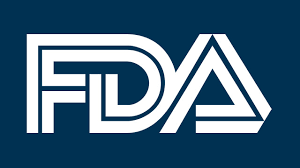This year will see the end of the Drug Supply Chain Security Act (DSCSA)’s midterm goals. The DSCSA will hit its second milestone and proceed into the third phase of the Act. What does the transition into the third phase of the DSCSA mean for trading partners involved in the drug supply chain?
The Different Phases Of The DSCSA
Seeing how the third phase of the DSCSA will impact trading partners requires laying the groundwork for the DSCSA. The DSCSA was created to give the FDA more ability to regulate drugs involved in the drug supply chain. Many drugs that move through the drug supply chain are illegitimate or dangerous. They can be counterfeit, contaminated, stolen, or otherwise hazardous. To combat these hazardous drugs, the DSCSA’s goal is to allow the tracking of specific drugs from the manufacturer all the way down to the consumer. The fact that every time the drug changes hands it is logged means that it is much easier for regulatory bodies to find out where a problem occurred if something goes wrong.
The transition from the current system of tracking drugs to the advanced traceability system of the DSCSA couldn’t happen overnight. Members of the drug supply chain had to have time to transition to the new requirements. Because of this fact, the DSCSA was broken up into different phases with different milestones.
The phases of the DSCSA are as follows:
- Lot-level Management
- Item Serialization
- Serialized Traceability
The Previous Phases Of The DSCSA:
Lot-Level Management
The DSCSA’s first phase dealt with lot-level management. It started on January 1st, 2015 and applied to manufacturers, repackagers, and wholesalers. It started applying to pharmacies on July 1st of that year. The lot-level management system was intended to kick off the transition between monitoring lots and batches of drugs to the monitoring of individual items. Lots and batches refer to specific groups of prescription drugs manufactured or packaged at a specific location. The way these batches and lots were tracked involved the compilation of three different datasets.
Transaction Information, Transaction History, and Transaction Statements all had to be included along with a transaction. Transaction information contained things like the number of containers, the lot number of the product, the strength and dosage of the product, and the transaction date. The history of the transaction was a statement that contained all previous transaction information going back to the manufacturer. The transaction statement is a statement acknowledging that the product has changed hands to another trading partner.
Item Serialization
We are currently in the middle of the midterm portion of the DSCSA. This period runs until November of 2019 and it mandates that re-packagers and manufacturers of drugs must serialize the individual packages with a unique product identifier.
The product identifier that the DSCSA requires is a combination of several different systems previously used to track drugs. These include systems like the national drug code established by the FDA, barcodes which are part of the GS1 Global Trade Item Number system, individual serial numbers, lot numbers, and expiration dates. These various forms of information are to be combined into a single label that can be applied to an individual drug package. This product information is put into a 2-D DataMatrix that enables the product to be (with some effort) tracked back through the system by a human or computer. Product packages cannot change hands in between trading partners without the included product identifier.
Tracing Products At The Item Level
By November 2023 the FDA expects that all trading partners involved in the drug supply chain will be utilizing product identifiers and have a system capable of tracking these product identifiers all the way through the chain. Whereas previous levels of the DSCSA mandated that packages of drugs must be trackable, by this point individual items must be traceable as well.
The product identifier information must be entered into some kind of system that allows an individual item to be traced in between trading partners. Currently, members of the drug supply chain are experimenting with possible solutions to the drug tracing problem. Various pilot programs are being tested out by different companies, and solutions like blockchain and other communal databases are being explored. December of last year saw the FDA released statements regarding their standards for data exchange, data architecture, and data aggregation. These standards must be taken into account by companies and pilot programs moving forward.
So to recap, what exactly will happen in the next phase of the DSCSA? As the next milestone for the DSCSA comes ever closer, the companies involved in the drug supply chain will not only need to implement serialization at the item level of the supply chain, they will also need to create a method of storing serialization information and allowing the FDA or other authorities to trace products all across the supply chain. The task may be daunting, but the benefits for consumer health and safety will be worth it.
About TrackTraceRx Suite
Other solutions on the market today are totally fragmented by only providing one piece of the puzzle. Pharmaceutical companies today are stuck subscribing to multiple services, accessing different companies for support and paying thousands of dollars to integrate different systems. The TrackTraceRx Suite is a game changer by combining the TrackTraceRx Traceability Solution, a ERP, and a Commerce Platform completely integrated out of the box. This eliminates having to deal with multiple support, feature services and integration costs.




